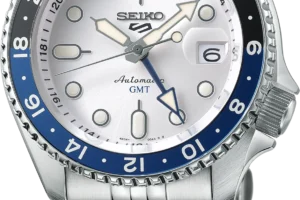In the competitive world of branding and custom merchandise, standing out is paramount. While printed logos have their place, there’s a timeless, professional, and durable quality to embroidered logos that simply can’t be replicated. But have you ever wondered how a complex company logo makes the leap from a digital file to a perfectly stitched emblem on a polo shirt or cap? The answer lies in the critical, behind-the-scenes magic of embroidery digitizing services. This specialized process is the gateway to transforming any artwork, especially your brand’s identity, into a flawless digitized logo for embroidery. Whether you’re a business owner, a promotional product distributor, or a hobbyist looking to scale, understanding this service is the first step to unlocking the full potential of thread and fabric.
Table of Contents
ToggleWhat Are Embroidery Digitizing Services, Exactly?
Let’s clear up a common misconception first: embroidery digitizing is not simply converting an image file (like a JPEG or PNG) into a format an embroidery machine can read (like a .DST or .PES). It is a highly technical and artistic process.
Think of an embroidery digitizer as a cartographer for thread. They take your source artwork and create a detailed “map” or set of instructions that tells the embroidery machine exactly how to recreate that design with stitches. This digital blueprint, the digitized file, dictates everything:
-
Stitch Type: Where to use satin stitches for smooth, shiny lines, fill stitches for solid areas, and run stitches for fine details.
-
Stitch Direction: The angle and path of every stitch, which affects the fabric’s pull, the design’s texture, and its overall stability.
-
Density: How closely packed the stitches are, which is crucial for preventing puckering or creating overly stiff designs.
-
Underlay: A foundational layer of stitching that stabilizes the fabric and creates a base for the top stitches to sit on, ensuring crisp edges and preventing fabric show-through.
-
Color Sequencing: The order in which the different thread colors are stitched.
Without professional embroidery digitizing services, even the most expensive commercial embroidery machine would be unable to produce a clean, professional, and lasting result. The quality of the digitizing directly determines the quality of the final embroidered product.
The Art of the Digitized Logo for Embroidery
Your logo is the visual cornerstone of your brand. It communicates your company’s values, professionalism, and identity at a glance. When this logo is translated into embroidery, it needs to maintain its integrity. This is where the specific skill of creating a digitized logo for embroidery comes into play.
A skilled digitizer doesn’t just trace your logo; they interpret it for a new medium. They understand that what works on a screen or a business card doesn’t always work in thread. Key considerations include:
-
Simplifying Complex Details: Extremely fine lines, tiny text, or subtle gradients often don’t translate well to embroidery. A digitizer will advise on simplifying these elements without sacrificing the logo’s core identity.
-
Managing Text: Small font sizes can become blurred and unreadable when stitched. A digitizer can recommend bolder, cleaner typefaces or adjust the size to ensure your company name remains legible.
-
Accounting for Fabric and Garment: The same digitized logo might need slight adjustments depending on whether it’s being stitched onto a thick, spongy fleece jacket or a structured, curved baseball cap. Professional services account for these variables.
The goal is to create a digitized logo for embroidery that is not only recognizable but also enhances your brand through its textured, high-quality appearance.
Why You Can’t Skip Professional Digitizing
It can be tempting to use auto-digitizing software or opt for the cheapest online service, but this is a classic case of “you get what you pay for.” Poor digitizing leads to a host of problems that can damage your brand’s image and waste money on ruined garments.
The consequences of bad digitizing include:
-
Puckering: The fabric gathers and wrinkles around the design, making it look messy and unprofessional.
-
Thread Breaks: Incorrect density or pull compensation can put excessive tension on the thread, causing frequent breaks and production delays.
-
Fabric Show-Through: Insufficient underlay or density allows the base fabric to be visible through the stitches, creating a cheap, unfinished look.
-
Loss of Detail: Critical elements of your logo may be lost or blurred if not digitized with the proper stitch types and sequencing.
-
Unstable Designs: A design that isn’t properly anchored with underlay can easily snag and unravel over time.
Investing in professional embroidery digitizing services is an investment in quality. It ensures your branded apparel looks premium, lasts for years, and accurately represents the quality of your business.
The Process: From Your Artwork to a Stitch-Ready File
So, how does it work? Engaging with a digitizing service is typically a straightforward process:
-
Submit Your Artwork: You provide the clearest and highest-resolution version of your logo possible. Vector files (AI, EPS, PDF) are ideal as they have clean, scalable paths, but high-quality PNGs or JPEGs can also work.
-
Specify Your Needs: You’ll inform the service about the garment type (e.g., cotton t-shirt, twill cap, tough jacket), the desired finished size of the embroidery, and the number of colors you’d like to use.
-
The Digitizing Magic: A professional digitizer will then work their magic, using specialized software to create the stitch file. This can take anywhere from a few hours to a day, depending on the design’s complexity.
-
Review and Approval: Many reputable services will provide a preview image of the digitized design. This allows you to see how the stitches are laid out and approve the work before it’s sent to the machine.
-
Receive Your File and Stitch! Once approved, you receive the final, machine-ready file. You can then load it onto your embroidery machine and start producing flawless embroidered goods.
Finding the Right Embroidery Digitizing Partner
Not all digitizing services are created equal. When looking for a partner to handle your valuable branding, look for:
-
Experience and a Strong Portfolio: Look for examples of their work, especially on logos similar in style to yours.
-
Clear Communication: They should be willing to discuss your project, offer advice, and be transparent about their process and pricing.
-
Revisions Policy: A confident service will offer at least one round of minor revisions to ensure you are completely satisfied.
-
Fast Turnaround: Time is money. Look for services that offer 24-48 hour turnaround times as a standard.
Conclusion: More Than Just a Stitch in Time
In the end, embroidery digitizing services are the indispensable bridge between your digital brand identity and the tangible, textured world of embroidered apparel. A professionally crafted digitized logo for embroidery is more than just a decoration; it’s a statement of quality, durability, and attention to detail. It’s what turns a simple uniform into a walking billboard of professionalism and a promotional giveaway into a cherished item. By partnering with a skilled digitizer, you aren’t just buying a file—you’re investing in the flawless execution of your brand, one perfect stitch at a time. Don’t let poor digitizing be the weak thread in your branding strategy; empower your logo with the quality it deserves.


